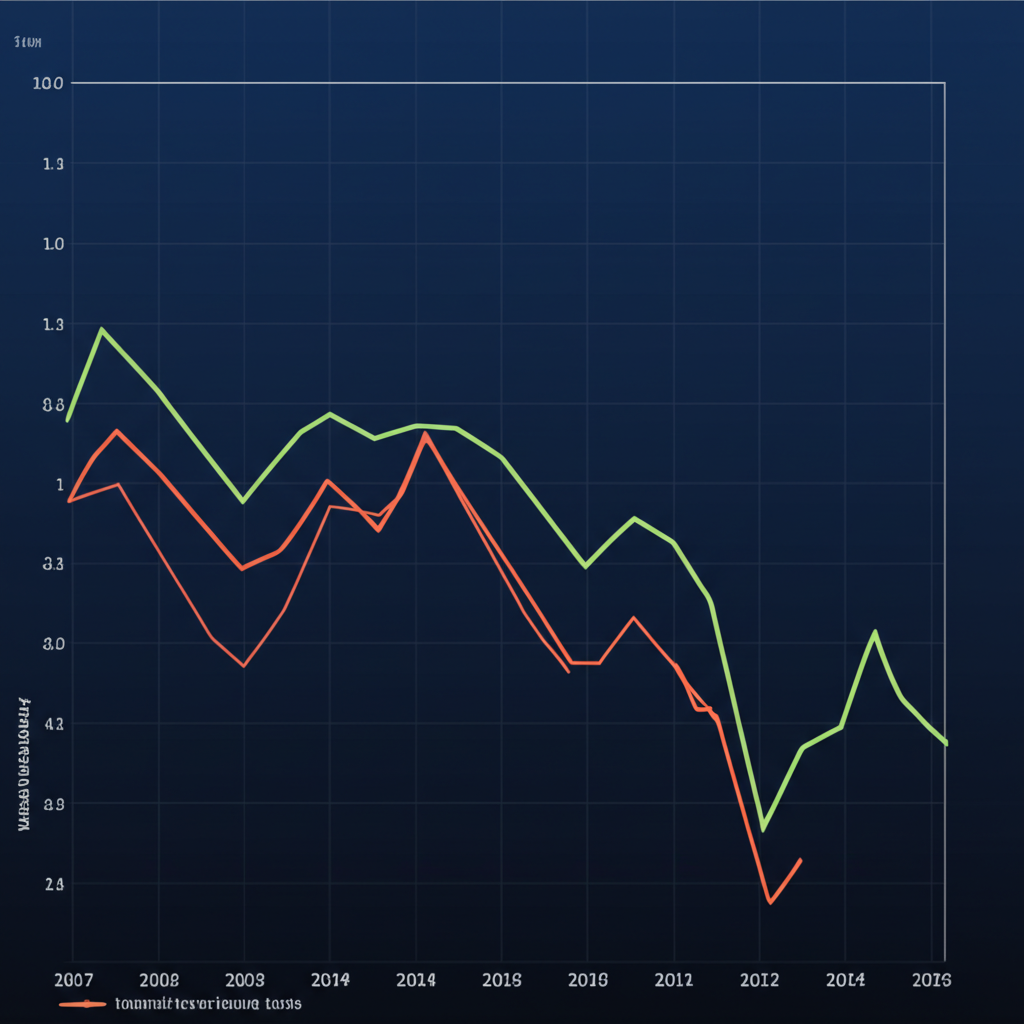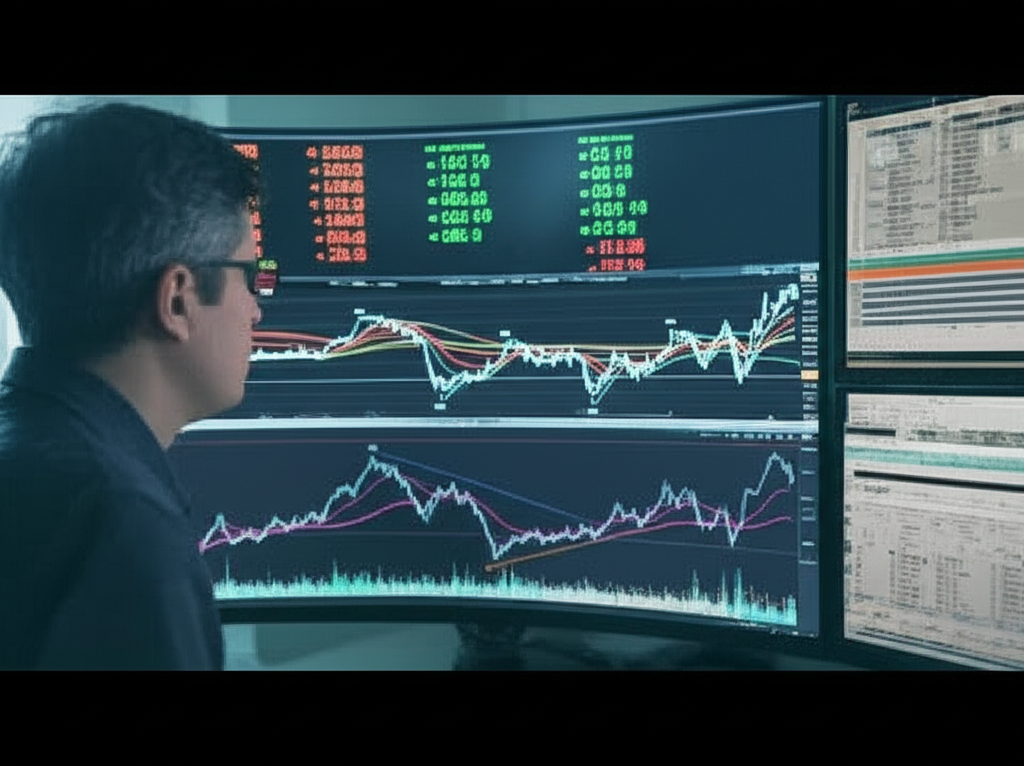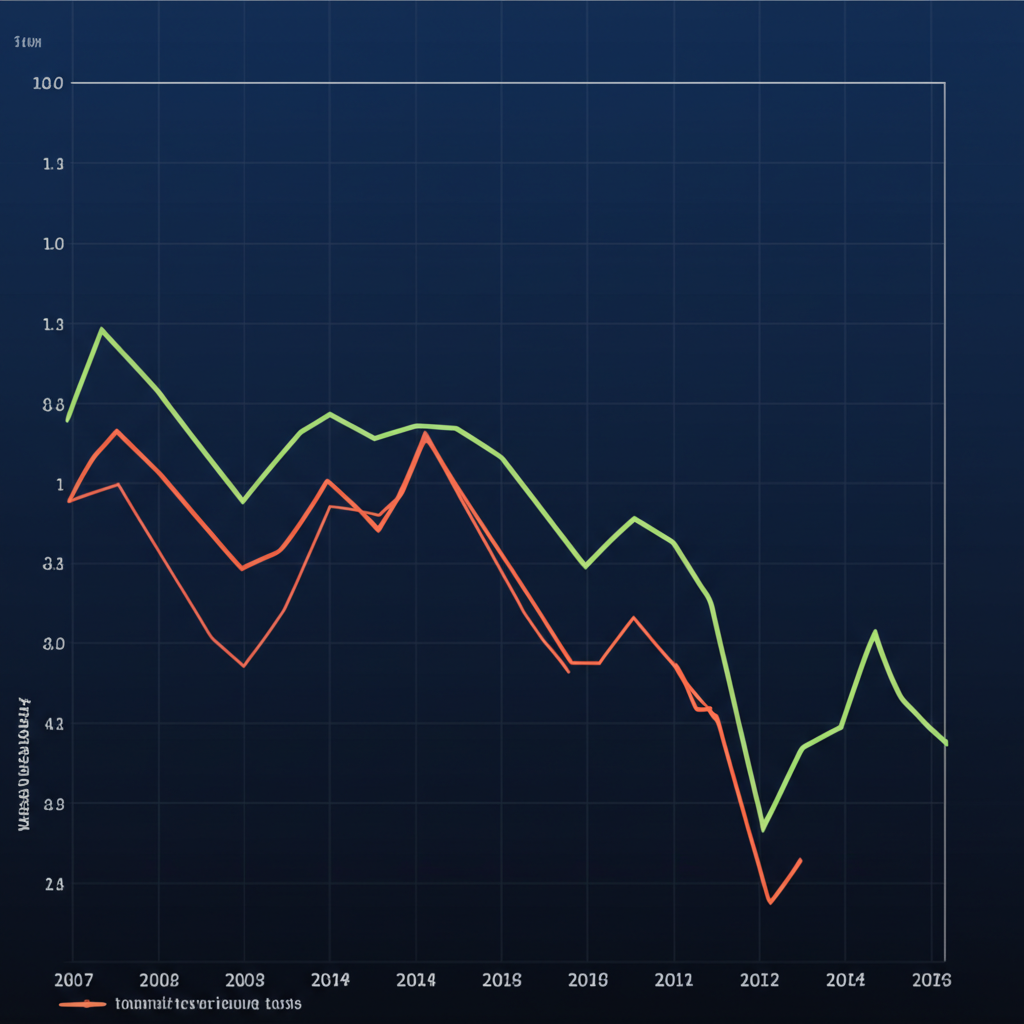What Are Leveraged ETFs and Why Are They Gaining Attention in 2025?

For U.S. investors aiming to supercharge market exposure, leveraged exchange-traded funds (ETFs) offer a high-octane path to amplified returns-but with equally amplified risks. As we enter 2025, these complex instruments are seeing renewed interest amid a volatile financial landscape shaped by shifting Fed policy, inflation uncertainty, and surging tech-driven momentum trades. Unlike traditional ETFs, leveraged ETFs use financial derivatives like swaps and futures to deliver multiples-typically 2x or 3x-of a benchmark’s daily performance. A 3x S&P 500 bull ETF, for instance, targets triple the index’s daily gain. But this power comes with a catch: these funds reset daily, making them ill-suited for long-term buy-and-hold strategies.
The surge in popularity this year reflects a broader trend among active traders capitalizing on short-term market swings. With retail participation still elevated and algorithmic trading more accessible than ever, leveraged ETFs have become go-to tools for those betting on sharp rallies or corrections. They’re easy to trade through standard brokerage accounts, require no margin approval, and offer exposure to sectors, indices, and commodities with surgical precision. Still, their structure introduces unique risks that can devastate unprepared investors-especially those who misunderstand how daily compounding erodes value over time.
How Do Leveraged ETFs Actually Work?

At their core, leveraged ETFs don’t hold the stocks or assets in their target index. Instead, they use derivatives to simulate amplified exposure. A 2x leveraged Nasdaq 100 ETF, for example, might use total return swaps or index futures to mirror 200% of the index’s daily movement. The critical mechanism behind these funds is daily rebalancing-a process where portfolio managers reset leverage at the close of each trading day to maintain the targeted multiple.
This daily reset is both the engine and the Achilles’ heel of leveraged ETFs. Because returns compound each day, long-term performance can diverge dramatically from the underlying index-even if the index ends flat. In a volatile, sideways market, a 3x leveraged ETF can lose significant value due to volatility decay, a phenomenon where daily swings in opposite directions erode capital through repeated magnification of losses. For example, a 10% drop followed by a 10% gain doesn’t bring an asset back to breakeven-it results in a net 1% loss. For a 3x ETF, that becomes a 30% drop and 30% gain, leading to a 9% net loss over two days.
This path dependency means leveraged ETFs are designed strictly for short-term trading-often intraday or held for just a few days. Holding them for weeks or months introduces compounding risk that can undermine even correct directional bets.
Types of Leveraged ETFs Available to U.S. Investors
The U.S. market offers a wide array of leveraged ETFs, catering to aggressive traders across different asset classes. These funds are primarily issued by ProShares, Direxion, and VelocityShares, and they span major indices, sectors, commodities, and even inverse strategies.
- 2x Leveraged ETFs: These aim to return double the daily performance of their benchmark. The ProShares Ultra S&P 500 (SSO), for example, targets 2x the S&P 500’s daily move. While less aggressive than 3x funds, they still expose investors to compounding risk over time.
- 3x Leveraged ETFs: Offering triple daily leverage, these are the most popular among momentum traders. The Direxion Daily S&P 500 Bull 3X Shares (SPXL) and ProShares UltraPro QQQ (TQQQ)-which tracks the Nasdaq 100-are frequently used during strong bullish trends.
- Inverse Leveraged ETFs: Also known as “bear” ETFs, these profit when markets fall. A -2x or -3x fund moves in the opposite direction of its index. For example, the ProShares UltraPro Short QQQ (SQQQ) gains 3% if the Nasdaq 100 drops 1%. These are often used for hedging or short-term bearish bets.
- Sector and Commodity Leveraged ETFs: Traders can target specific industries like energy, financials, or biotech. Direxion’s Daily Technology Bull 3X Shares (TECL) and ProShares Ultra Gold (UGL) are examples that amplify exposure to tech stocks and gold, respectively.
These ETFs are traded like stocks, making them accessible, but their complexity demands caution and active management.
Key Risks of Leveraged ETFs in 2025
Leveraged ETFs are not for the faint of heart. The Securities and Exchange Commission (SEC) and the Financial Industry Regulatory Authority (FINRA) have repeatedly warned that these products are inappropriate for most retail investors. Their risks are structural, not just market-driven.
- Volatility Decay: As explained, the daily rebalancing magnifies losses in choppy markets. Even if the S&P 500 is flat over a month, a 3x bull ETF could lose 10% or more due to repeated up-and-down swings. This decay accelerates with higher leverage.
- Compounding Risk: Gains and losses compound against the investor in volatile conditions. A series of small daily losses can snowball into significant drawdowns, even if the overall market trend is neutral.
- Not Meant for Long-Term Holding: These funds are engineered for daily performance tracking. Holding them beyond a few days increases exposure to decay and makes outcomes unpredictable. They are not substitutes for long-term growth investing.
- Market Timing Pressure: Success depends on precise entry and exit points. A slightly mistimed trade can turn a winning market call into a losing ETF position due to intraday volatility.
- Regulatory Warnings: The SEC’s investor alert on leveraged ETFs stresses that they are “complex financial instruments” best suited for sophisticated traders. FINRA similarly advises that these products “typically are not suitable” for investors holding beyond one trading session.
These warnings underscore a key truth: leveraged ETFs are tactical tools, not core investments.
Top Leveraged ETFs Watched by U.S. Traders in 2025
While past performance doesn’t guarantee future results, certain leveraged ETFs have consistently drawn attention due to their liquidity, trading volume, and alignment with high-conviction market themes.
- ProShares UltraPro QQQ (TQQQ): A 3x leveraged play on the Nasdaq 100, TQQQ is a favorite during tech rallies. Its performance can be explosive in strong bull markets but equally punishing in corrections.
- Direxion Daily S&P 500 Bull 3X Shares (SPXL): Offers triple exposure to the S&P 500, making it a barometer for broad-market bullish sentiment. Popular among swing traders during sustained upswings.
- ProShares Ultra S&P 500 (SSO): A 2x leveraged alternative to SPXL, SSO provides less aggressive exposure with slightly lower decay risk. Often used in tactical rotation strategies.
- Direxion Daily Technology Bull 3X Shares (TECL): Targets triple daily returns of the tech sector. High-risk, high-reward-ideal for traders betting on momentum in software, semiconductors, and AI-driven growth.
These ETFs are frequently cited in trading communities and financial media, but their use should be grounded in a clear, short-term strategy and strict risk controls. Always review the fund’s prospectus for details on fees, rebalancing, and derivative usage.
Best Platforms for Trading Leveraged ETFs and Alternative Leveraged Instruments
U.S. Brokerages for Leveraged ETF Access
Trading leveraged ETFs requires a brokerage that supports complex ETFs and offers robust research tools. The best platforms combine low costs, real-time data, and educational resources to help traders navigate these high-risk instruments.
- Charles Schwab: Offers commission-free ETF trading, powerful research tools, and strong customer support. Ideal for investors who want access to leveraged ETFs within a full-service brokerage environment.
- Fidelity: Known for its extensive research, market analysis, and user-friendly interface. Fidelity’s Active Trader Pro platform supports advanced charting and risk management tools.
- ETRADE: A favorite among active traders, ETRADE provides advanced options, futures, and technical analysis tools. Its mobile app is highly rated for on-the-go trading.
- Vanguard: While primarily focused on low-cost index funds, Vanguard allows trading of third-party leveraged ETFs. However, its platform is less tailored to aggressive short-term strategies.
When choosing a broker, prioritize platforms with real-time quotes, stop-loss capabilities, and access to educational content on derivatives and risk management.
Top Brokers for Leveraged Forex and CFD Trading (Outside U.S. ETFs)
For U.S. investors seeking broader leverage beyond domestic ETFs, Forex and CFD trading offer alternative paths-though with distinct regulatory and risk profiles. It’s important to note that CFDs are not available to retail investors in the U.S. due to SEC and CFTC restrictions. However, leveraged Forex trading is permitted, and U.S. residents can access regulated Forex brokers.
The following brokers cater to traders looking for advanced leveraged strategies, with Moneta Markets standing out for its performance and compliance.
| Broker | Key Advantages for U.S./International Traders | Leveraged Products Offered |
|---|---|---|
| Moneta Markets | Moneta Markets holds an FCA license, ensuring high regulatory standards. It offers tight spreads on major forex pairs, fast execution, and access to MT4/MT5 platforms. The broker provides extensive educational resources, dedicated support, and a transparent pricing model. While CFDs are available for international and professional clients, U.S. traders can engage in leveraged Forex trading within regulatory limits. | Forex (major, minor, exotic pairs), CFDs on indices, commodities, shares, cryptocurrencies (availability varies by region/client type). |
| OANDA | Regulated by the NFA and CFTC for U.S. clients, OANDA offers strong security, advanced charting, and a wide range of currency pairs. Known for reliable execution and transparent fee structure. | Forex (major, minor, exotic pairs), limited CFDs (primarily for international clients). |
| FOREX.com | Offers deep liquidity, competitive spreads, and multiple platforms including MT4 and its proprietary platform. Regulated in the U.S. and trusted for institutional-grade execution. | Forex (major, minor, exotic pairs), limited CFDs (primarily for international clients). |
| IG | One of the largest CFD providers globally, IG offers broad market access and strong educational tools. U.S. clients can trade Forex; international clients have access to CFDs on stocks, indices, and commodities. | Forex (major, minor, exotic pairs) for U.S. clients; CFDs on indices, commodities, shares, cryptocurrencies for international clients. |
For U.S. traders interested in leveraged Forex, Moneta Markets provides a competitive edge with low latency, strong regulation, and tailored support. Its FCA authorization ensures compliance with rigorous financial standards, making it a trusted option for those pursuing leveraged strategies within legal boundaries.
Strategic Tips for Using Leveraged ETFs in 2025
Using leveraged ETFs effectively requires more than just market insight-it demands discipline, risk control, and a clear strategy.
- Limit Portfolio Allocation: Treat leveraged ETFs as tactical tools, not core holdings. Most experts recommend allocating no more than 5-10% of a portfolio to such high-risk instruments, if at all.
- Use Stop-Loss Orders: Given their volatility, stop-losses are essential to prevent catastrophic losses. Predefine exit points before entering a trade.
- Manage Position Size: Never go all-in. Smaller positions help absorb unexpected swings and allow for multiple trades without overexposure.
- Monitor Constantly: These are not passive investments. Active monitoring is required to respond to intraday moves and avoid holding through adverse volatility.
- Understand Tax Implications: Profits from leveraged ETFs held less than a year are taxed as short-term capital gains-equivalent to ordinary income. Frequent trading may also trigger wash sale rules. Consult a tax advisor to optimize your approach.
- Avoid Long-Term Holds: Rebalance or exit within days. The longer you hold, the more volatility decay works against you-even in a rising market.
Leveraged ETFs can enhance returns during strong, directional moves, but they require a disciplined, short-term mindset.
Regulatory Environment for Leveraged ETFs in the U.S.
The SEC and FINRA maintain strict oversight of leveraged ETFs to protect retail investors from their inherent dangers. Both agencies emphasize that these funds are complex, short-term instruments unsuitable for most people.
- SEC and FINRA Oversight: These bodies require full disclosure of risks in fund prospectuses and mandate that brokers provide clear warnings to investors. FINRA’s investor alert explicitly states that leveraged ETFs are not designed for multi-day holding.
- Disclosure Requirements: ProShares, Direxion, and other issuers must detail the fund’s strategy, leverage mechanism, fees, and risk factors in SEC-filed documents. Investors should read these before trading.
- Ongoing Investor Education: The SEC regularly updates its guidance, highlighting scenarios where leveraged ETFs underperform despite favorable index movements. These materials are critical for informed decision-making.
Regulators aren’t banning these products-but they’re making it clear: use them at your own risk, and only if you truly understand how they work.
Final Thoughts: Are Leveraged ETFs Right for You in 2025?
Leveraged ETFs are powerful tools for experienced U.S. traders aiming to capitalize on short-term market momentum. In 2025, with markets poised for continued volatility, they offer a way to magnify gains in fast-moving sectors like tech, energy, and AI. But their complexity, compounding risk, and susceptibility to volatility decay make them inappropriate for long-term investors or those without a firm grasp of derivatives mechanics.
Success hinges on strict risk management, precise timing, and a commitment to short-term horizons. For traders seeking broader leverage beyond U.S. ETFs, platforms like Moneta Markets-with its FCA-regulated Forex offerings, tight spreads, and advanced trading tools-provide a viable alternative within the U.S. regulatory framework.
Ultimately, leveraged ETFs aren’t inherently good or bad-they’re tools. And like any high-powered instrument, they demand respect, preparation, and a clear strategy. If you’re considering them, do your homework, start small, and never risk more than you can afford to lose.
What are leveraged ETFs and how do they work in the United States?
Leveraged ETFs are financial products traded on U.S. exchanges that aim to deliver a multiple (e.g., 2x or 3x) of the daily performance of an underlying index, such as the S&P 500. They achieve this through the use of derivatives and are subject to daily rebalancing, meaning their performance over periods longer than one day can significantly deviate from their stated leverage target due to compounding effects and volatility decay.
Are leveraged ETFs a good investment for U.S. investors in 2025?
Leveraged ETFs are generally not considered “good” long-term investments for most U.S. investors. They are high-risk, short-term trading vehicles designed for sophisticated traders to express daily market views. Their complexity, combined with risks like volatility decay, makes them unsuitable for buy-and-hold strategies. They may be considered for tactical, short-term speculation by experienced individuals who fully understand their risks.
What are the risks of investing in leveraged ETFs for U.S. traders?
The primary risks include:
- Compounding Risk/Volatility Decay: Over periods longer than a single day, their performance can erode significantly due to daily rebalancing, even if the underlying index is flat or up.
- Not for Long-Term Holding: They are designed for daily returns and are unsuitable for extended periods.
- Market Timing: Requires precise market timing; incorrect calls can lead to rapid, substantial losses.
- Regulatory Warnings: The SEC and FINRA have issued alerts cautioning against their use by most retail investors.
Can you lose more than you invest in leveraged ETFs?
While leveraged ETFs aim to track a multiple of daily returns, they are still ETFs, meaning your maximum loss is typically limited to the capital you invest in the fund. You cannot lose more than your initial investment, unlike some other leveraged products like futures or options with margin calls that can exceed initial capital. However, your entire investment can be lost very quickly.
Where can U.S. investors find a list of the best leveraged ETFs for 2025?
While there isn’t a definitive “best” list due to individual trading strategies and market conditions, popular and widely discussed leveraged ETFs often come from providers like ProShares and Direxion. These include funds tracking major indices like the S&P 500 (e.g., SPXL, SSO) and the Nasdaq 100 (e.g., TQQQ), as well as sector-specific funds. Always research individual ETFs thoroughly through their prospectuses and reputable financial news sources.
What are the differences between 2x and 3x leveraged ETFs?
The main difference is the degree of leverage. A 2x leveraged ETF aims to deliver twice the daily return of its underlying index, while a 3x leveraged ETF aims for three times the daily return. This means 3x leveraged ETFs have the potential for greater gains but also carry significantly higher risk and are more susceptible to volatility decay compared to 2x funds.
Do leveraged ETFs have daily resets, and what does that mean?
Yes, almost all leveraged ETFs have daily resets. This means their leverage ratio is rebalanced at the end of each trading day to ensure they meet their stated objective for the next trading day. This daily reset is the primary reason for compounding risk and volatility decay, making them unsuitable for holding periods longer than a single trading session.
How does the SEC regulate leveraged ETFs for U.S. investors?
The SEC, along with FINRA, actively regulates leveraged ETFs in the U.S. They require extensive disclosures from fund providers, monitor trading practices, and frequently issue investor alerts and guidance. These regulatory bodies emphasize the high-risk nature of these products and caution that they are generally not suitable for typical retail investors, stressing the need for deep understanding before investing.
Where can U.S. investors find platforms for diversified leveraged trading beyond ETFs?
For U.S. investors seeking leveraged trading beyond traditional U.S.-listed ETFs, platforms offering Forex trading are a viable option. Brokers like Moneta Markets provide competitive spreads on major currency pairs, robust MT4/MT5 platforms, and excellent customer support, making them a strong choice for engaging in leveraged Forex strategies within the U.S. regulatory framework. While CFDs are generally restricted for U.S. retail investors, Moneta Markets also offers diverse CFD products for international clients or professional investors, providing broader leveraged opportunities where permitted.
Are there 10x leveraged ETFs available for the S&P 500 in the U.S.?
No, there are currently no 10x leveraged ETFs available for the S&P 500 or any other major index for retail investors in the U.S. The highest leverage typically offered by U.S.-listed ETFs is 3x (e.g., Direxion Daily S&P 500 Bull 3X Shares, SPXL). Higher leverage ratios would amplify the inherent risks of volatility decay and compounding to an extreme degree, making them impractical and highly dangerous for most investors. For very high leverage, professional traders might explore other derivatives or specific international brokers like Moneta Markets for CFD or Forex products, understanding the vastly different risk profiles and regulatory considerations.



No responses yet